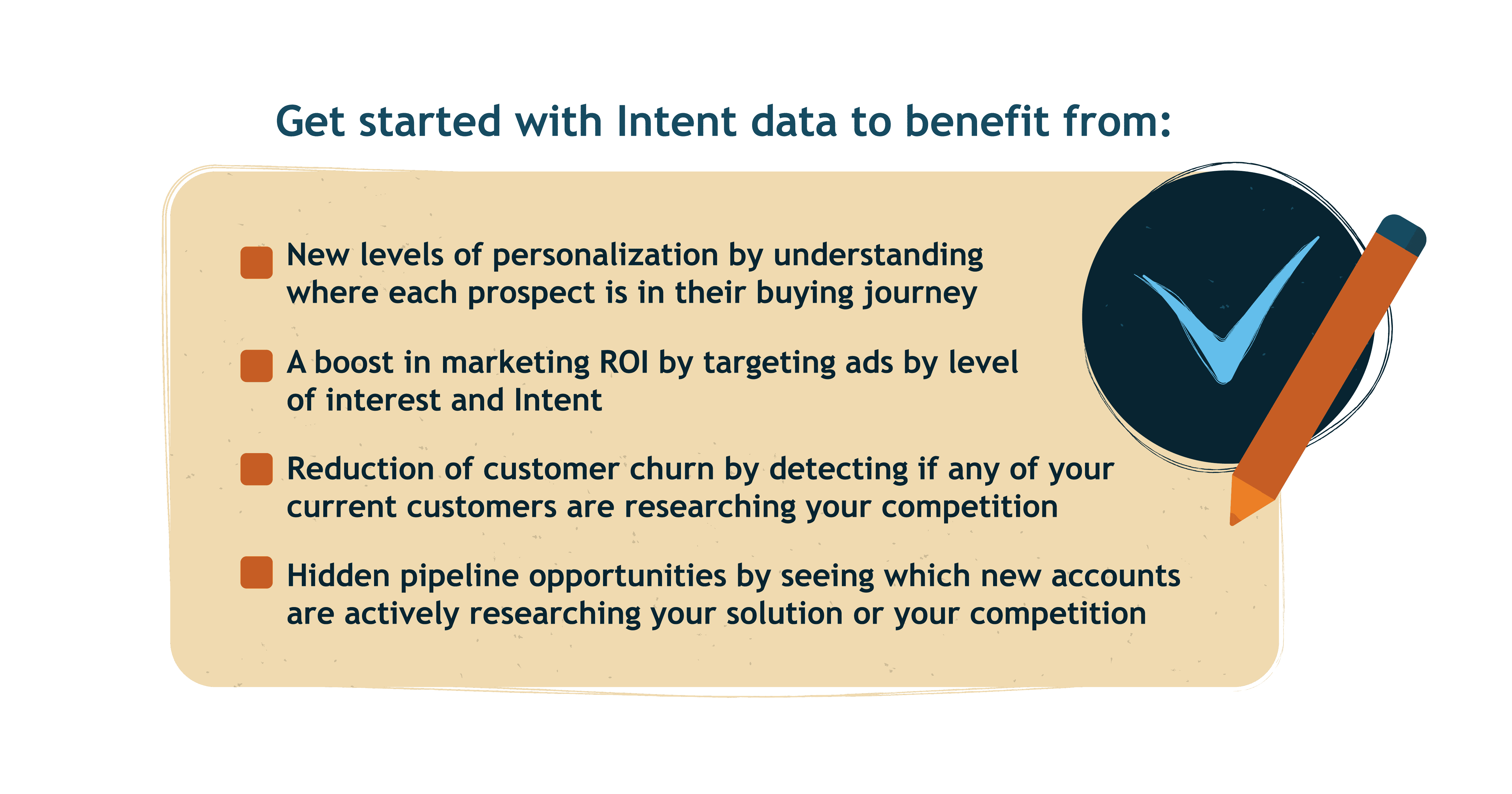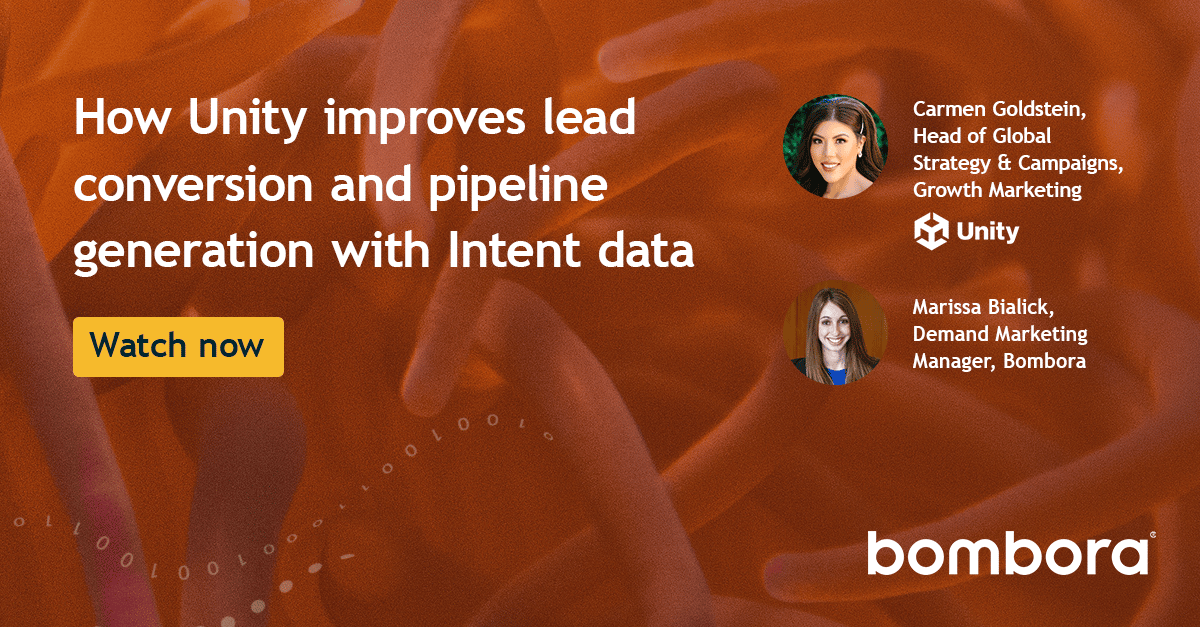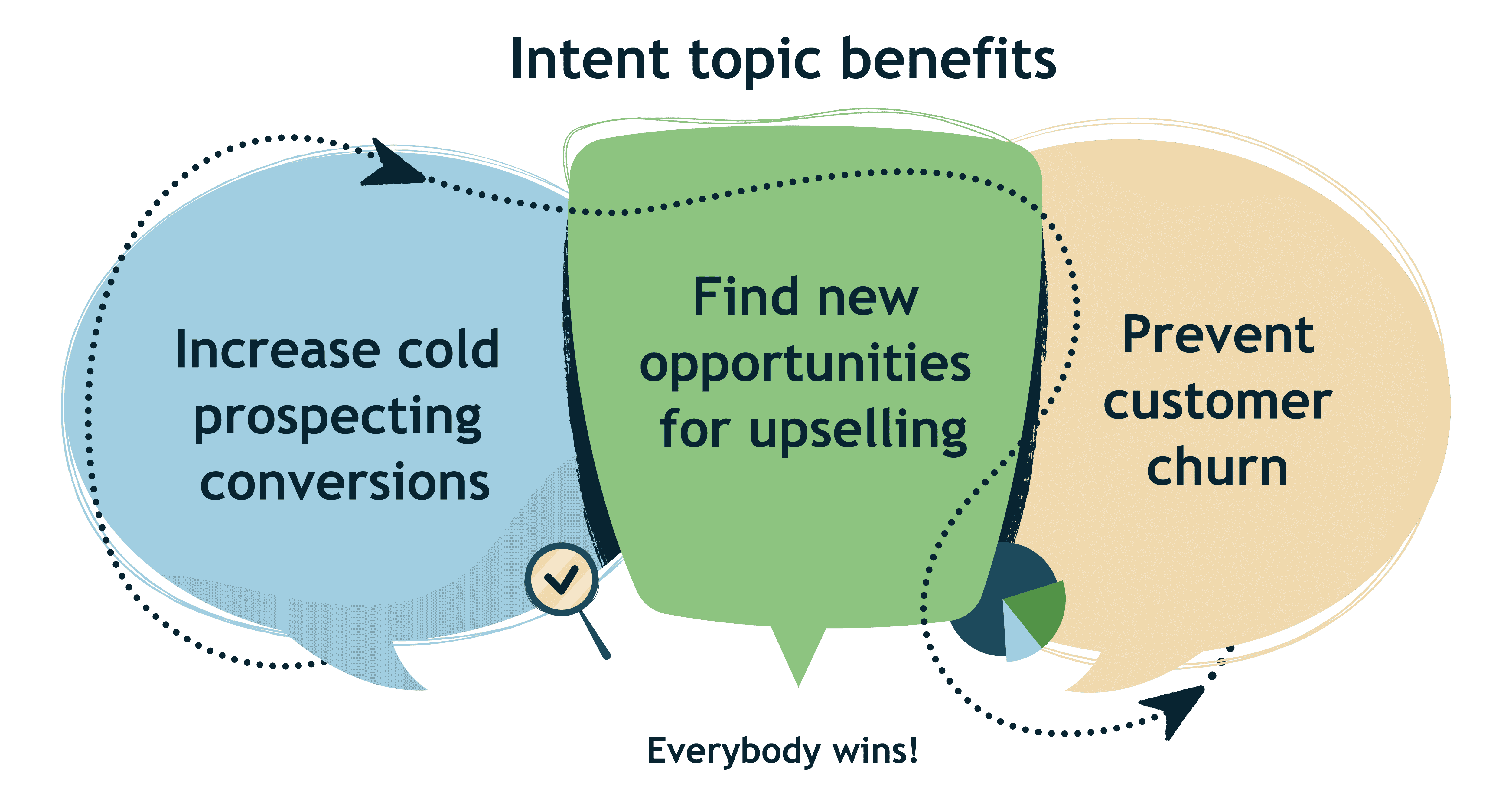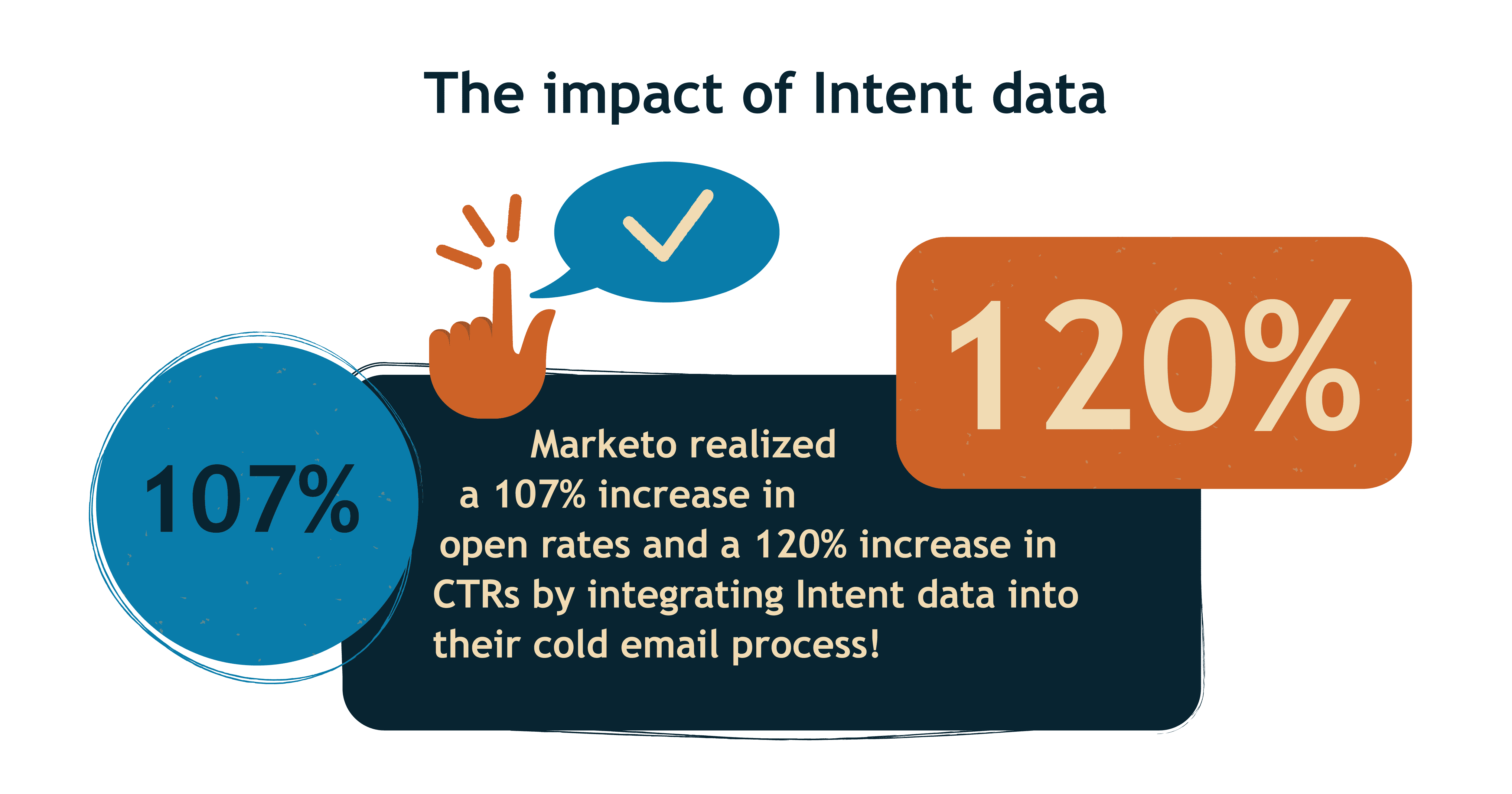Manufacturing ABM spotlight: How to use B2B Intent data to identify total addressable in-market (TAIM) accounts
- 1 A resilient industry poised for ABM growth
- 2 B2B Intent data is a game-changer for manufacturing ABM programs
- 3 Marketing techniques to identify and target high-intent accounts
- 4 Progress opportunities faster through the ABM funnel
- 4.1 Top-of-the-funnel (TOFU) engagement
- 4.2 Middle-of-the-funnel (MOFU) engagement
- 4.3 Bottom-of-the-funnel (BOFU) conversions:
- 4.4 Measuring your (Go-to-Market) GtM effectiveness using Intent data
- 4.5 Embracing Intent data integration throughout the manufacturing enterprise
- 4.6 The future of Intent data in manufacturing
A resilient industry poised for ABM growth
The manufacturing sector is a key component of the global economy, accounting for roughly 15% of the world’s total economic output. However, numerous obstacles have been presented to the industry recently, such as increased costs, international competition, and the transition to digital technologies. This has put traditional production systems under pressure, prompting organizations to focus on developing fresh products and services that can satisfy customers in real-time as much as possible. Despite headwinds of supply chain disruptions, labor shortages, and economic uncertainty, 2023 will be a year of accelerating growth for manufacturing ABM programs worldwide.
Maintaining agility is crucial for securing market leadership; the ability to adapt to evolving conditions and optimize investments for maximum returns is essential in transforming current challenges into novel opportunities. To address these challenges, many manufacturing organizations are turning to B2B Intent data to help them precisely identify and target potential customers as they move toward modern-day account-based marketing (ABM) tactics.
B2B Intent data is a game-changer for manufacturing ABM programs
ABM in manufacturing businesses can seem like a monumental challenge. Dire pain points that can incur costly side effects, especially when it comes to limiting competitive sustainability (and advantage). They include:
- Sales cycles over 90 days (long and complex)
- Niche, specialized segments of prospects vs. a large addressable market
- Lack of reliable data on the account’s research and buying journey
That’s why B2B buyer Intent tools and platforms can help marketing teams stay on their toes in this sector in 2023. Intent data can also help identify unique buying patterns and forecast customer demand. With this information, you make production and inventory more efficient by reducing spending and maximizing the production of goods your customers are looking for.
With Intent data, you can also zero in on narrow audiences and develop effective strategies for reaching them. For instance, your sales teams can do personalized outreach at in-person trade shows and industry-specific inbound programs by understanding what businesses are researching in particular verticals.
Check out our latest Marketing Pulse Report that focuses on marketers in the top 100 manufacturing businesses and provides unique insights on how they are connecting faster with their future customers.
What is B2B Intent data, and how is it sourced?
B2B Intent data is exactly what it sounds like. It tells you about customers who have the intent to buy a product or service you sell, and exactly what they intend to purchase. For instance, if a manager is looking for an ERP software for their team, they would be doing a lot of research into it. By tracking and analyzing this data, a company selling ERP software can identify customers who are most likely to make a purchase and target their sales and marketing resources onto them.
B2B Intent data is most commonly obtained from first-party and third-party sources. If you’re selling inventory management solutions and someone comes up on your website to read about it, it could indicate buyer intent. The data you get by tracking visitors on your website or your social media channels is first-party data.
But if someone is looking to purchase something, they won’t limit their research to just one website. They may be exploring competitor websites, educational channels, or affiliate websites. By collecting and analyzing the data from these websites, you can get a deeper insight into buyer’s intent. This data, collected from sources other than your own digital assets, is referred to as third party intent data.
Marketing techniques to identify and target high-intent accounts
in the manufacturing industry using buyer intent.
B2B Intent data can be a valuable asset for identifying high-intent accounts in the manufacturing industry without a question. That said, buying committees are getting larger in the B2B sector which adds on to the long sales cycles common in the space. Most companies spend a lot of time researching the solutions before they make a decision, which offers more time and Intent data for you to make your move, but it also makes it difficult to decide which tactics may work for an account.
Here are a few marketing techniques that help target high-intent accounts using B2B Intent data:
Account-based marketing (ABM)
ABM is a strategic approach to targeting specific high-value accounts with personalized content and messaging. Because manufacturing target audience lists can be short and highly specific, programmatic ABM is one of the most effective tactics for building a demand pipeline without spending a lot of resources on building custom marketing workflows.
By leveraging Intent data, you can further narrow down your audience and target all of your resources on accounts that want to buy, instead of spending them on accounts that may not be interested. Your business can customize its marketing efforts to cater to the unique needs of a narrow audience — as they need them — and improve the conversion rates.
Learn more about how Hornbill identified 900+ net-new, in-market accounts to add to its database, which resulted in dozens of new active sales opportunities.
Content marketing
B2B Intent data doesn’t just show the accounts that are likely to buy. It can also reveal what your audience is researching, what they understand about your solutions, and what they’re confused about. Buyer intent allows you to create and distribute high-quality content that addresses these issues.
Maybe you’re manufacturing food processing units. But Intent data suggests that the audience who loves your equipment is looking for a specific product from your competitors. This could indicate that your audience is not aware of that particular product. By producing more content about your specific solution, you can fill this gap among your customer base. Your content marketing team can use this information to create blog posts, whitepapers, case studies, and other content centered around the gap in what the buyer knows.
For instance, Unity, the world leader in creating 2D and 3D gaming content, produced a webinar around digital twins. By leveraging Intent data from Bombora, they identified a list of potential customers and send this webinar series to them. Right after attending the webinar, one of these customers filled up the contact form on Unity’s website to know more about their solutions.
Email marketing
Email marketing can be a powerful force to drive conversions and it is even more powerful in a manufacturing ABM program where you’re selling complex products to a small finite list of accounts.
Intent data can point you towards potential customers using a competitor’s product trying to figure out a particular production challenge. By targeting these customers with emails addressing their challenges, you can bring them into your sales pipeline.
Marketo, a marketing automation company, was able to improve email open rates by 107% and click-through rates by 120% by using Bombora’s Company Surge, a type of intent data.
Social media advertising
Marketers can combine social media advertising with Intent data, just like with email marketing. They can create ads that address what the buyers are looking for and target them through LinkedIn, Facebook, or other platforms where your buyers are hanging out.
Explore how 8×8 built an effective marketing channel via LinkedIn and increased its sponsored news feed ads engagement by 67% using the Company Surge® integration for LinkedIn.
Retargeting campaigns
This approach is straight out of the Intent data playbook. By monitoring your websites and digital assets, you can collect first-party Intent data and identify those interested in your products and services. Once you have a list of accounts, target them with ads on other websites and social media platforms.
Retargeting campaigns can have incredible impact on your ROI. With this approach, Salesforce was able the reach the right people with targeted ads and was able to achieve a 271% increase in ROI.
Programmatic advertising
Leverage Intent data to inform programmatic advertising campaigns. Use data management platforms (DMPs) and demand-side platforms (DSPs) to target high-intent accounts with relevant ads based on online behavior and content consumption patterns.
Lead scoring
Incorporate Intent data into your lead scoring models to better prioritize high-intent accounts. Assign higher scores to prospects who strongly engage with relevant topics and industries, allowing your sales team to focus on the most promising leads.
Progress opportunities faster through the ABM funnel
The manufacturing sector is known for its complex buying journeys, slow sales cycles, and buying committees that appear to be growing every day.
With ABM funnels and Intent data, marketers and sales teams can speed up the sales process and manage their resources more effectively. Intent data can help sales team penetrate buying committees with different interests and pain points.
Here are six ways to use Intent data with content marketing to reach accounts at the top of the funnel (TOFU).
Nearly 50% of the top 100 manufacturers are actively researching social activation, an 83% increase in the weekly average compared to 2022.
Top-of-the-funnel (TOFU) engagement
Topic research: Marketers can use Intent data to identify the most relevant topics and pain points for their target audience. They can then create content that addresses these issues, and position their business as a knowledgeable and helpful resource for niche applications.
Did you know 61% of industrial manufacturing marketers track website visitors from source to sale?
Long-form content: Manufacturing companies can use Intent data to understand their customers’ interests and develop informative and engaging blog posts around them.
Educational resources: With Intent data, sales teams can create high-quality educational content such as whitepapers, eBooks, or case studies that address the specific interests of your target audience. Instead of assuming audience interest, marketers can base their strategies on concrete data on what the audience is looking for.
Did you know 38% of industrial manufacturing marketers are unsure of the number of site visitors converting into leads or customers?
Webinars and video content: Webinars and video content take up considerable resources and marketers will be under pressure to show good ROI on them. With Intent data, marketers can create webinars based on what their target audience is looking for and make sure they find it valuable. With this approach, marketers can get strong ROI on their marketing assets.
Infographics: Intent data can guide the selection of topics relevant to your audience instead of making guesses and assumptions. With this approach, you can direct your resources towards material that produces strong conversion rates.
Trade shows: Leverage advanced capabilities of B2B Intent data products like Bombora’s Company Surge® to engage your target accounts more effectively before, during, and after the show. You can then accurately assess the performance of each trade show with deeper analytics and attribution.
The above strategies are useful for customers at the top of the funnel, who may not be aware of your solution, or even the problem that they may be facing. Here are some strategies for customers at the middle of the funnel, the accounts that know your solution exists, but are not completely sold on it.
Middle-of-the-funnel (MOFU) engagement
Personalized email marketing: Intent data can help marketers segment prospects based on their interests. Then they can send personalized emails according to their interests and nurture them through their journey.
Targeted content offers: Just as with TOFU marketing, companies can also use Intent data to identify the interests and needs of customers in the middle of the funnel and develop content for them. But for MOFU, the content would be in the form of industry reports, case studies, solution guides, and others.
Webinars and workshops: When you get to the middle of the funnel in the manufacturing industry, the topics and interests that may be interesting to the customers gets more nuanced and unique. With Intent data, marketers can identify topics that most of the audience finds interesting, create webinars around them, and serve it to the specific audience. With this approach, marketers can find strong ROI even for materials that take a lot of resources to create.
Retargeting campaigns: Retargeting campaigns leveraging Intent data produce great results even in MOFU audiences as well. Manufacturing companies can better identify what their audience are looking on other websites and target those accounts with specific content on other channels.
Bottom-of-the-funnel (BOFU) conversions:
Besides top-of-the-funnel activities, Intent data can help drive customers at the bottom of the funnel as well to conversion. Among many manufacturers, the focus is often on BOFU activities. One-third of the top 100 manufacturers are actively researching return on investment (ROI) analysis in Q1 2023 — up 62% compared to 2022’s weekly average — and demand planning — up 83%.
Here’s how manufacturers can use Intent data to drive BOFU conversions:
Product demonstrations and trials: Manufacturers can offer tailored product demonstrations or free trials based on the interests and needs identified through Intent data. This approach allows prospects to experience your solutions first-hand, increasing the chances of conversion.
Sales enablement: By sharing Intent data insights with sales team members, manufacturing companies can help them tailor their outreach to prospects’ interests and needs. For instance, instead of assuming what a customer may be interested in or blindly pitching a product from the manufacturer’s portfolio, sales teams can talk about products or solutions that the account is actually interested in because they know which stay of the buyer’s journey the account is in.
Lead scoring: Incorporate Intent data into your lead scoring models to better prioritize high-intent prospects. Assign higher scores to those who strongly engage with relevant topics and industries, enabling your sales team to focus on the most promising leads.
Did you know 47% of industrial manufacturing marketers have fewer than three lead nurturing campaigns set up?
Personalized offers and incentives: Use Intent data to identify your prospects’ needs and preferences. Create personalized offers or incentives that address their unique requirements, increasing the likelihood of closing deals.
Measuring your (Go-to-Market) GtM effectiveness using Intent data
Key performance indicators (KPIs) are essential for measuring the success of Intent data strategies in the manufacturing industry. They help determine the effectiveness of your marketing and sales efforts and provide valuable insights for optimizing your strategies. Here are some of the most business-critical KPIs to consider when evaluating the success of your Intent data-driven campaigns:
- Lead generation
- Lead quality
- Conversion rate
- Engagement metrics
- ROI
- Account penetration
- Sales cycle length
- Customer lifetime value (CLV)
By tracking these KPIs, your business can assess the effectiveness of your Intent data strategies, make data-driven decisions, and continuously optimize your marketing and sales efforts to achieve faster and shorter conversion cycles.
Embracing Intent data integration throughout the manufacturing enterprise
Instead of limiting Intent data just to the sales or marketing process, manufacturers can integrate it throughout all of their processes and workflows. For instance, they can integrate Intent data into the manufacturing workflows to change production depending on demand.
But creating a culture of data-driven decision-making in the manufacturing industry requires a shift in mindset and adoption of new practices. Here’s how sales and marketing leaders can foster this culture.
- Lobby leadership buy-in: Emphasize the importance of data-driven decision-making at the leadership level. Communicate the benefits of using Intent data to make informed decisions and establish clear expectations for data-driven practices within the organization.
- Consistently educate and train teams: Provide training and resources to help sales and marketing teams understand the value of Intent data and how its impact can be custom to the markets you’re looking to capture. Conduct workshops, seminars, or webinars covering concepts and techniques related to Intent data analysis and application, enabling transparency and education across teams and functions.
- Establish KPIs and metrics (that matter): Define KPIs and metrics that align with your organization’s B2B marketing and sales goals. Use Intent data to track progress and measure the success of sales and marketing efforts, providing insights for optimization and improvement.
By implementing these strategies, sales and marketing leaders can create a culture of data-driven decision-making in the manufacturing industry using B2B Intent data. This approach enables your organization to make informed decisions, optimize resources, and drive better results in your sales and marketing efforts.
The future of Intent data in manufacturing
B2B Intent data is crucial in creating a more efficient, sustainable, and customer-focused sales cycle in the global manufacturing industry. Here are some ways Intent data contributes to a more efficient and customer-centric sales cycle:
- Sales prioritization
- Personalized outreach
- Sales and marketing alignment
- Accelerated sales cycle
- Customer retention and expansion
- Data-driven decision-making
Bombora’s ABM solutions equip B2B manufacturers operating in specialized markets with the tools to implement a tailored approach, enhancing your ability to target, acquire, and retain optimal accounts. By offering in-depth insights into prospective clients’ behaviors, interests, and requirements, Intent data facilitates a more informed understanding of the target audience, enabling your business to refine your sales and marketing strategies to achieve results that impact your opportunity pipeline.
To learn more about how we can support your manufacturing ABM team, please visit https://bombora.com/csa-signup/ to sample the data.





